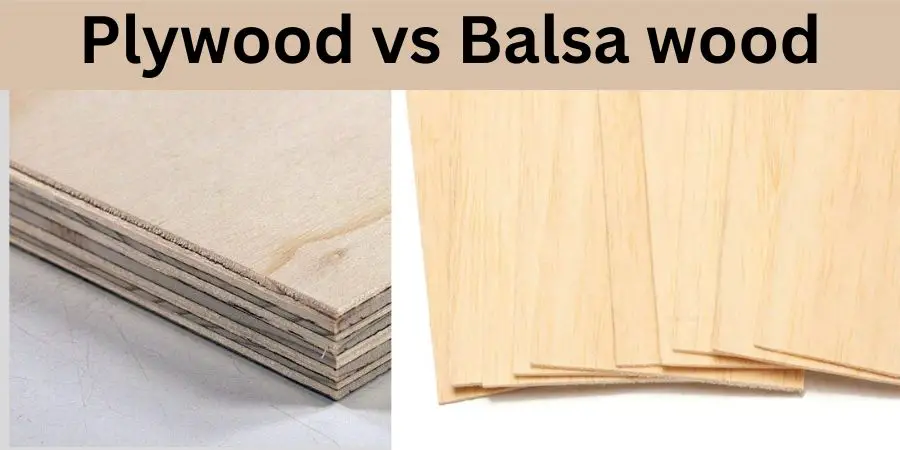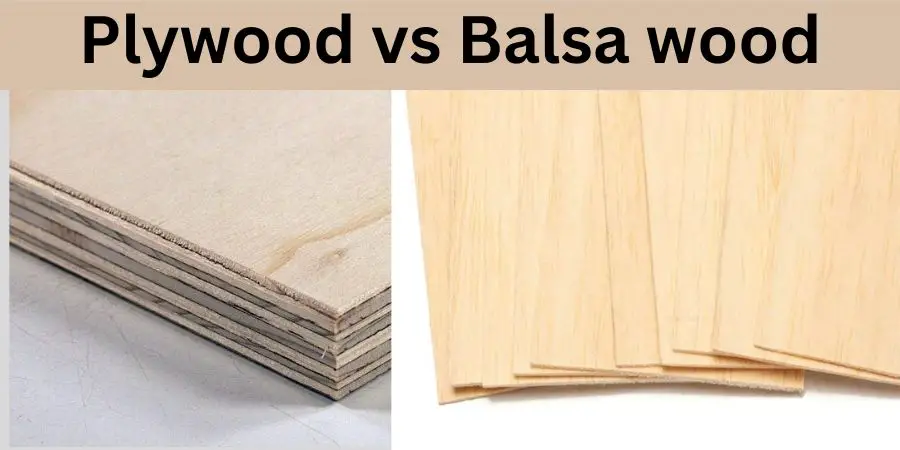Are you still debating which material to use for your woodworking project? It’s time to get serious about making the right choice. Plywood and balsa wood are two popular options, but which one is better?
Let’s take a closer look at their advantages and disadvantages to determine the winner.
Plywood vs Balsawood

Plywood and balsa wood may both be wood materials, but they differ significantly in their properties.
The main difference is that plywood is much stronger and more durable than balsa wood, making it a better choice for heavy-duty applications.
On the other hand, balsa wood is much lighter, making it perfect for model making or other projects where weight is a concern.
So, if you need strength and durability, go for plywood, but if you want a lightweight material, balsa wood is your best bet.
Plywood: Strength and Versatility
Plywood is engineered wood that is made by bonding together thin sheets of wood veneer at right angles. Here’s why you should consider plywood:
Advantages:
- Strong and durable: Plywood is resistant to splitting, cracking, and warping.
- Versatile: It’s suitable for a wide range of applications, from furniture to construction.
- Cost-effective: Plywood is generally less expensive than solid wood.
Disadvantages:
- Heavy: If weight is a concern, plywood may not be the best choice.
- Less attractive: Plywood has a less natural appearance than solid wood and may require painting or finishing to look good.
Balsa Wood: Lightweight and Easy to Work With
Balsa wood is a lightweight wood that comes from the balsa tree, native to South and Central America. Here’s why you should consider balsa wood:
Advantages:
- Lightweight: Balsa wood is ideal for projects where weight is a concern.
- Easy to work with: It’s soft and easy to cut, sand, and shape with hand tools.
- Attractive: Balsa wood has a natural, attractive appearance that requires minimal finishing.
Disadvantages:
- Fragile: Balsa wood is not as strong or durable as plywood or solid wood.
- Limited applications: It’s best suited for lightweight applications such as model making and may not be suitable for heavy-duty use.
When to Use Plywood vs Balsa Wood
Choosing between plywood and balsa wood depends on the specific needs of your project. Here’s when to use each material:
Use plywood when:
- You need a strong and durable material for heavy-duty applications.
- You don’t mind the appearance of the finished product or plan to paint or finish it.
- Weight is not a concern.
Use balsa wood when:
- You need a lightweight material for model making or other projects where weight is a concern.
- You want a natural, attractive finish that requires minimal finishing.
- You don’t need the strength or durability of plywood or solid wood.
Cost Comparison
In general, plywood is less expensive than balsa wood. The cost of each material depends on factors such as size, thickness, and location.
Common Applications
Here are some common applications for each material:
Plywood:
- Furniture making
- Flooring
- Wall paneling
- Roofing
- Cabinets
Balsa Wood:
- Model making
- RC airplanes
- Miniature boats
- Art projects
Make the Right Choice
Now that you know the advantages and disadvantages of plywood and balsa wood, you can make an informed decision. Consider the needs of your project and choose the material that best suits your requirements. Don’t settle for less than the best – choose wisely and create something amazing!





